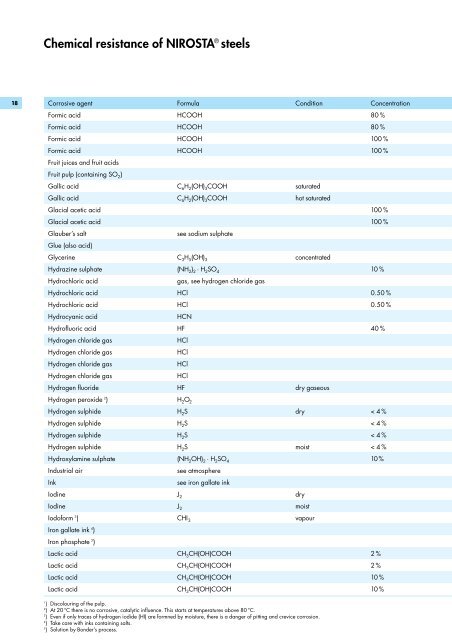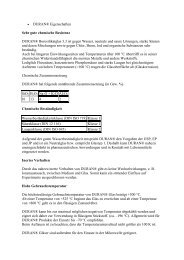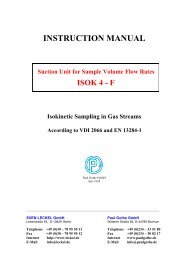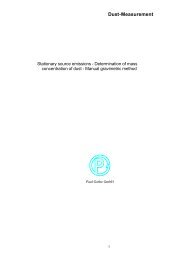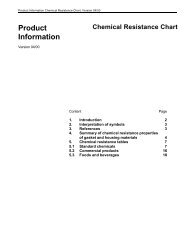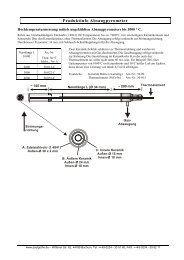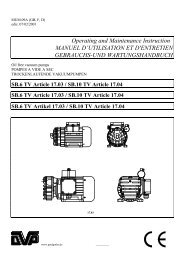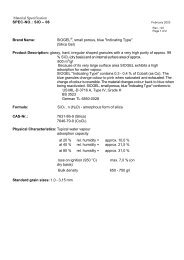Chemical resistance of NIROSTA steels - Rovasta
Chemical resistance of NIROSTA steels - Rovasta
Chemical resistance of NIROSTA steels - Rovasta
Create successful ePaper yourself
Turn your PDF publications into a flip-book with our unique Google optimized e-Paper software.
<strong>Chemical</strong> <strong>resistance</strong> <strong>of</strong> <strong>NIROSTA</strong> ® <strong>steels</strong><br />
18<br />
Corrosive agent Formula Condition Concentration<br />
Formic acid HCOOH 80 %<br />
Formic acid HCOOH 80 %<br />
Formic acid HCOOH 100 %<br />
Formic acid HCOOH 100 %<br />
Fruit juices and fruit acids<br />
Fruit pulp (containing SO 2 )<br />
Gallic acid C 6 H 2 (OH) 3 COOH saturated<br />
Gallic acid C 6 H 2 (OH) 3 COOH hot saturated<br />
Glacial acetic acid 100 %<br />
Glacial acetic acid 100 %<br />
Glauber’s salt<br />
see sodium sulphate<br />
Glue (also acid)<br />
Glycerine C 3 H 5 (OH) 3 concentrated<br />
Hydrazine sulphate (NH 2 ) 2 · H 2 SO 4 10 %<br />
Hydrochloric acid<br />
gas, see hydrogen chloride gas<br />
Hydrochloric acid HCl 0.50 %<br />
Hydrochloric acid HCl 0.50 %<br />
Hydrocyanic acid<br />
HCN<br />
Hydr<strong>of</strong>luoric acid HF 40 %<br />
Hydrogen chloride gas<br />
HCl<br />
Hydrogen chloride gas<br />
HCl<br />
Hydrogen chloride gas<br />
HCl<br />
Hydrogen chloride gas<br />
HCl<br />
Hydrogen fluoride HF dry gaseous<br />
Hydrogen peroxide 2 ) H 2 O 2<br />
Hydrogen sulphide H 2 S dry < 4%<br />
Hydrogen sulphide H 2 S < 4%<br />
Hydrogen sulphide H 2 S < 4%<br />
Hydrogen sulphide H 2 S moist < 4 %<br />
Hydroxylamine sulphate (NH 2 OH) 2 · H 2 SO 4 10 %<br />
Industrial air<br />
see atmosphere<br />
Ink<br />
see iron gallate ink<br />
Iodine J 2 dry<br />
Iodine J 2 moist<br />
Iod<strong>of</strong>orm 3 ) CHI 3 vapour<br />
Iron gallate ink 4 )<br />
Iron phosphate 5 )<br />
Lactic acid CH 3 CH(OH)COOH 2 %<br />
Lactic acid CH 3 CH(OH)COOH 2 %<br />
Lactic acid CH 3 CH(OH)COOH 10 %<br />
Lactic acid CH 3 CH(OH)COOH 10 %<br />
1<br />
) Discolouring <strong>of</strong> the pulp.<br />
2<br />
) At 20 °C there is no corrosive, catalytic influence. This starts at temperatures above 80 °C.<br />
3<br />
) Even if only traces <strong>of</strong> hydrogen iodide (HI) are formned by moisture, there is a danger <strong>of</strong> pitting and crevice corrosion.<br />
4<br />
) Take care with inks containing salts.<br />
5<br />
) Solution by Bonder’s process.


